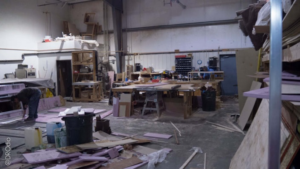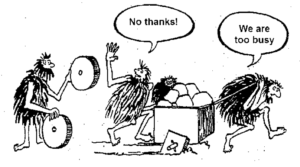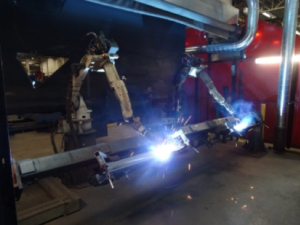
Automation is the new word of the day. And no one is sure if it’s a good thing or a bad thing. It’s been called a job killer, a life saver, a time saver, a creator of poverty, a creator of new riches, etc. So, it’s no surprise that automated welding means different things to different people.
Automated welding has been around for a long time, but it was mostly being used by big car manufacturers. Now it’s being offered to companies who didn’t think they were good candidates before. However there are still psychological barriers: workers are afraid of losing their jobs and management is afraid of paying for a dark and hopeless journey.
But the goal of automated welding is increasing productivity, improving quality and eliminating hard work. It’s the reality of the slogan: work smarter, not harder.
But here are some of the obstacles that automated welding faces.

We all have some experience of digging for loose change under the sofa, on the table, under the papers on the counter and lo, behold we have enough for a large pizza. This same approach can be used in finding money for new ventures. So, let’s look where the loose change might be found.
To increase productivity you might think of hiring a new welder. What’s that going to cost? Multiply his hourly wage by 2000 hours (50 weeks x 40 hours ). Remember to add his medical, unemployment insurance and Canadian pension contribution. Factor in the sick days and the holidays. You can also add in the expense of looking for a new welder – if you can find one.
Remember to include the provisions that need to be made for his safe welfare: welding helmets, fume extractors, etc. Next, consider how productive the new hire is during the day. Is it going to make a big difference in productivity? Another area to factor in is rework and rejects. These are all part of the expenses of a welding department.
If you didn’t have to spend money on any of that, how much money would you have?
With automated welding, yes you spend a big sum but you keep your experienced workers, skip the new hires, and increase production and quality of work. And with this increase, comes the revenue stream to pay for the new system. Even a penny-pinching banker can understand that thinking.

Welding automation is only complicated and difficult if your shop is not well organized. Automated welding needs order in the work flow. If you depend on experienced workers to get the job done because they know how to put the puzzle together then you’re not a good candidate for automated welding. But if your work depends on the process and flow, you’re a great prospect. If your fit-ups for welding depend on an excellent experienced welder then you’re not a good candidate for automated welding. Automated welding needs the parts being welded to have a good fit-up. Most robots are blind and unable to make judgment calls. It needs the pieces to be consistently well fitted – lots of them. It loves those endlessly repeatable jobs; the jobs that welders hate: mind-numbing and dull.
If you don’t look after your equipment then automated welding isn’t for you. Part of the success of automated welding is that the equipment is working a majority of the time. A robot doesn’t complain about his health, he just stops working when no one looks after him. So, the most productive worker comes to a halt because no one concidered preventive maintenance. Preventive maintenance is a necessity for welding automation.
There is one good reason why you’re not too busy: your competitors are looking into it. They want an easier way to deliver a better product for less cost.

Another reason is the exercise of understanding your operations and layout is healthy. Even if nothing gets done at the end of the exercise, you’re in a better position for the future. It’s quite possible that the technology you need is not quite there yet. But if you don’t know what you’re looking for, it’s quite possible you won’t be able to see it when it does come.
Re-examing your operations and making changes is called continuous improvement. And even if it doesn’t include an automated welding system, it’s a good thing to do.

For welding automation to be successful, management has to get on board and involved. They have the power to approve the budget, ensure proper planning and cross departmental boundaries to make sure everyone works as a team. You also need to involve your trusted welding sales person because: 1. They are aware of the new systems that are available 2. They know your business and 3. They know what things will work well for you.
Automated welding includes more than just robotics. There are systems that will enable you to lay down a nice long weld, flat or up a wall. There are positioners that can rotate the work piece without having to use cranes and hoists, which creates less time needed for preparing for welding.
We are all worried about our budgets. But we have to invest in technology that will keep us competitive. We all have objections to change. But we’ll never evolve if we don’t adapt. We are all too busy. But if it’s really important we can all find the time. Automated welding is no longer only meant for large scale production, it’s here for all size shops and it’s the future.
Give us a call and we can help look at your business and see where automated welding can help.